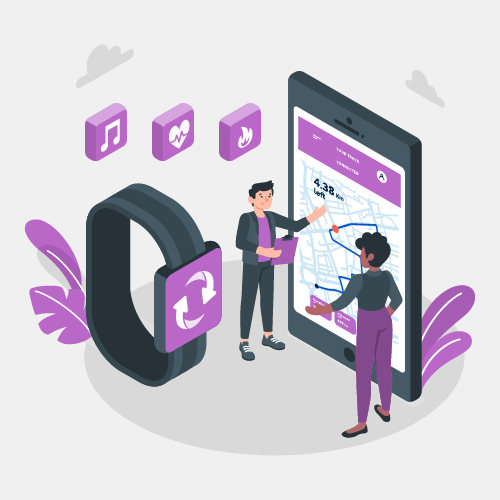8 Tips For Wearable App Development: Key Challenges & Ways To Meet Them
Enterprise mobility is a combination of wearable devices, technology and mobile solutions that are slowly and gradually transforming the equations and interactions of work involved in enterprise processes and methodologies. Due to rapid advancements in technology, wearable applications has become an extension of the mobile Android or iOS app. And, that’s why it’s integration with the wearable device ecosystem has made it successful. Our dexterous mobile app development team’s expertise and research has led us to find out the key factors, which must be explored to while developing a bespoke wearable app:
1. Craft a Use Case
Start with crafting a set of questions that are relevant from the wearable context. This will help you in identifying the best possible solutions and available wearable hardwares including API/SDK, development frameworks / platform and other effective measures for mobile app development.
2. Right Platform selection and API
There are numerous tools and APIs that are available in the market including Android, Salesforce, Apple. Thus its important to choose the right platform depending upon the requirement. So, in-spite of having multiple versions for different devices and platforms, end users will prefer to have a single app that is easily with every device and gives prompt quick response. For having a successful application, it must solve the biggest obstacle standing in front of the wearable revolution – app compatibility.
3. User-centric Design and Interface
Due to its small size, wearable device has numerous challenges inducing difficulty in implementing various feature sets. Wearable app’s Design and User interface is also one of the key factors because the users interacts with the wearable gadgets in various manners. While building an app, designers focus should be towards streamlining the end user experience with the restricted physical visible space available.
4. Data Breach
Wearable technology is still on the rising swing of the development phase, thus security concerns are anticipated. Since, Wearable tech devices can’t be connected to the Internet on their own and they require various synchronization or third party tools or functions to connect with the mobile apps available on the Internet-enabled devices. And, that’s why it has become the key concern for end user, who wants to purchase the wearable app. To meet the data security challenges, developers are required to accomplish all the required security concerns so that crucial and sensitive information can be protected.
5. Functionality and Features
For any Wearable app “Ease of its use and mobility” is the key objective. Prior to development, the key step is to add a feature-rich set and functionalities that can add value to end-users. Developers are required to understand user’s requirements and make it real.
6. Frequent updates well-versed with Latest Technology
Every back-n-forth we hear about the new wearables that are arriving in the market along-with the new technology. And, to sustain in this emerging market for long term success; meeting end user’s expectations and need, updating with the the latest technology is crucial. So, for developing market-centric wearable apps, developers are required to consider the future updates.
7. Battery Consumption and Memory Space
Battery consumption is one of the key factors in every smart devices. Users are always looking for the apps that should consume less power and memory. Thus, while wearable app development , developer should customize the code in such a manner that it takes less memory and battery consumption; so that it performs more effectively.
8. Rigrous Testing
Users are looking for user-centric mobile solutions and businesses are looking for more efficient solutions. App’s performance is one of the key metrics to measure the success of wearable app, which can only be attained with robust testing. So, do not even think about overlooking the quality assurance process as it is one of the wearable app development mistakes that turn down the innovative ideas too.
Presently, wearable devices are primarily connected with other devices, small screens with the restricted functionality that depends on another device. But have you ever thought that – What will happen if the connected device with wearables stops functioning properly? – This will create a lapse in efficiency. So, always remember that before publishing an app for wearable device it should undergo rigorous testing processes for all the possible functionalities and compatibilities with other devices.

strategies your digital product..



